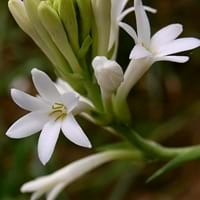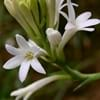Color
Pink, White, Yellow
Pink, Purple, Red, White, Yellow
Color Meaning
Pink - Sensitivity and Love, White - Purity and Innocence, Yellow - Happiness and Friendship
Pink - Sensitivity and Love, Purple - Elegance and Pride, Red - Courage, Desire and Love, White - Purity and Innocence, Yellow - Happiness and Friendship
Fragrance
Aromatic
Aromatic
Line
Not Available
Not Available
Silhouette
Not Available
Not Available
Blossom Texture
Not Available
Not Available
Form
Not Available
Not Available
Sunlight
Full Sun
Full Sun
Watering
Enough
Diligently
Type of Soil
Well-drained, Sandy
Well-drained
Essential Fertilizers
Lime stone, Nitrogen
Lime stone
Common Pests and Diseases
List of Pests
Aphids, Mites, Thrips
Aphids, Mealybugs, Slugs, Snails, Thrips
List of Diseases
Nematodes, Stem Rot
NA
Bloom Time
Late-Summer Season, Mid-Summer Season
All Summer Season, Fall Season, Spring Season, Winter Season
Origin
Mexico
America, Canada, Eurasia, Mediterranean Region
Interesting Facts of
- Tuberose flower blooms only at night and it is the only time when it is active. Due to this these are also called as “Night Queen”, “Mistress of the Night”, or “Raat ki Raani” in Hindi.
- In Hawaiian weddings, it is a tradition for the bride to wear a Tuberose wreath.
.
- Symmetry of Orchids is similar to human faces and they can grow anywhere but Antartica.
- In a single orchid seedpod there can be up to 3 million seeds.
Lifespan
Perennials - a plant that lives for three or more years
Perennials - a plant that lives for three or more years
Flower Meaning
Not Available
Astrological Flower
Not Available
Birth Month Flower
Not Available
Flower Availability
Not Available
Uses
Not Available
Not Available
Health Benefits
Good remedy for Diarrhea, Prevents Intestinal Ulcers
Best remedy for Cough & Cold, improves the functioning of the lungs, kidneys, and stomach, reduce stomach pain and cramping, Reduces risk of cardiovascular disease, useful against any chronic illness
Medicinal Uses
Acts as a antidepressant, Acts as a antispasmodic, Acts as an anti-inflammatory
Natural Healer, prevents dryness and flaky skin, Rejuvenates body and skin
Culinary Uses
Used in salads, soups and sandwiches
Added in candies, Included in wines and cocktails, Used as flavor food in deserts and ice creams
Design Uses
Not Available
Cosmetic Uses
Used in Perfumes, Utilized in making essential oils
Best for Dry sensitive skin, Used in creams, hand lotions and in essential oils, Used in Perfumes, Used in shampoos and soaps
Occasional Uses
Decoration, Wedding
Anniversary, Friendship Day, Wedding
Allergy
NA
blisters and pain, Contact Dermatitis, dry or cracked skin
Common Name
Not Available
Scientific Name
Polianthes tuberosa
Orchidaceae
Sub kingdom
Tracheobionta
Tracheobionta
Super Division
Spermatophyte
Spermatophyte
Division
Magnoliophyta
Magnoliophyta
Order
Asparagales
Orchidales
Class
Magnoliopsida
Liliopsida
Family
Asparagaceae
Orchidaceae
Sub Family
Agavoideae
Orchidaceae
Genus
Not Available
Not Available
Number of Species
Not Available
Not Available
More about Tuberose and Orchids Facts and color
You must be curious to know more about Tuberose and Orchids facts and color. flowers.comparespecies.com will let you know all the Interesting Facts about Tuberose and Orchids. Tuberose comes in Pink, White, Yellow colors whereas Orchids flowers are with Pink, Purple, Red, White, Yellow colors. Other Tuberose and Orchids facts will definitely amuse you.
Tuberose and Orchids growing conditions
Absolute growing condition is the only key to keep plants in good health and in good shape. Let’s learn about essential Tuberose and Orchids growing conditions. Tuberose requires Full Sun and Enough watering with 6.50 of Well-drained, Sandy soil. Orchids needs Full Sun and Diligently watering with 6.40 of Well-drained soil. Get other Tuberose and Orchids facts in the sections below.
Tuberose and Orchids Facts
Want to know about Tuberose and Orchids facts? Get all the Tuberose and Orchids facts here.
Tuberose and Orchids Classification
After knowing about various Tuberose and Orchids facts, let's study their classification. Based on genetic and physical features, Tuberose and Orchids classification starts with knowing their scientific name. The scientific name of Tuberose and Orchids is Polianthes tuberosa and Orchidaceae respectively. Tuberose belongs to Asparagaceae family whereas Orchids falls under Orchidaceae family. Also check out Flowers by Color so as to plant colorful aroma in the garden.





